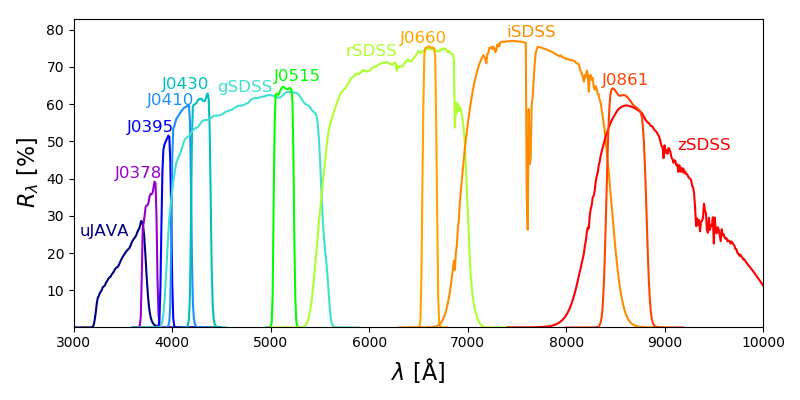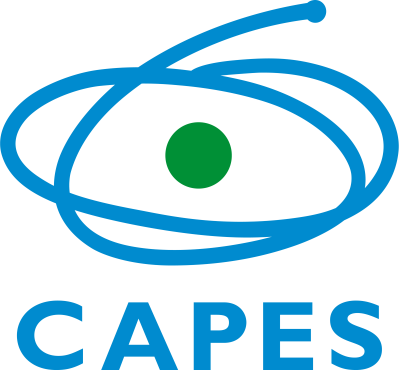Telescope, Optics and Control system
The T80S has a German equatorial mount (model NTM-1000) manufactured by the company ASTELCO, under a contract with the company AMOS. The optical system consists of an f/4.31 Ritchey-Chretien with one axial Cassegrain focal plane and a clear aperture of 860 mm. This provides a plate-scale of 55.56 arcsec/mm, a total FoV of 130 millimetres (translating to a 2 deg diameter on the sky), and an optimal FoV of 110 millimetres (1.7 deg diameter on the sky). The field corrector lens built by AMOS ensures an aberration degradation of less than 1%. T80S is housed in an 8 m Ash dome. The telescope can slew between two opposite sky positions in less than 1.5 minute, the limiting factor being the time it takes for the dome to move between the two positions. T80S is robotically operated by the chimera observatory control system. Developed in Python, chimera uses the Pyro3 library to convert the observatory sub-systems into Python objects that are accessible over the local network in a distributed way. On top of this framework, a supervisor algorithm takes care of checking the weather conditions and executes the observations according to constraints imposed by the astronomical conditions.
Basics Optics Parameters
Telescope Optical Configuration: Ritchey-Chretien Cassegrain
Manufacture: ASTELCO (Germany) + AMOS (Belgium)
Primary (“M1”):
| Radius of Curvature | -2471.295 mm concave |
|---|---|
| Conic Constant | -1.163946 |
| Optical Diameter (mm) | 826 |
| FoV Diameter | 2deg (130mm physical size) |
| F Number | 4.5 |
| Effective Collecting Area | 0.44 m2 |
F/4.5 secondary (“M2”):
| Distance from primary | 825,7695 mm |
|---|---|
| Radius of curvature | -1237.411 mm convex |
| Conic constant | -5.776745 |
| Optical Diameter (mm) | 302.879 mm |
Camera
T80S is equipped with an optical imager, T80Cam-S, consisting of a 12-filter system distributed in two filter wheels, shutter, entrance window, cryostat, detector, and the corresponding electronics and control system. T80Cam-S is operated through the observatory control system chimera.
The detector used is a 9232×9216 10μm-pixel array manufactured by the company e2v. The telescope plate scale at the detector is 0.55 arcsec/pixel and the FoV of the camera is 1.4×1.4 deg. The CCD is read out with 16 amplifiers organized in an 8×2 array. During readout of the amplifiers, the camera controller adds 27 pre- and post-scan pixels along the serial direction and 54 post-scan pixels in the parallel direction for the overscan correction. The detector can regularly be operated at 4 different readout speeds and two gains (note that even though it is also possible to bin the CCD readout in a customised way, we only use the regular 1×1 unbinned option).
The camera has two operational modes: (1) camera with the two filter wheels and an autoguider and (2) camera with polarimeter (the polarimeter contains its own filter wheel and has no autoguider). S-PLUS uses the first operational mode.
The S-PLUS Filter System
S-PLUS uses the Javalambre 12-filter photometric system devised for the J-PLUS project (Cenarro et al. 2019). Through a combination of broad- and narrow-band filters that serve to identify the main stellar spectral features (absorption lines and continuum), this photometric system was designed for the optimal classification of stars (Gruel et al. 2012 and Marin-Franch et al. 2012). The filter system is composed of 7 narrow-band filters (J0378, J0395, J0410, J0430, J0515, J0660, J0861) that coincide with, respectively, the [OII], Ca H+K, Hδ, G-band, Mgb triplet, Hα and Ca triplet features. The system also includes the u, g, r, i, and z broad-band filters which serve to constrain the spectral continuum of sources. The g, r, i, and z bands are similar to those from SDSS. The u-band filter is the Javalambre u-band filter, which has a slightly more efficient transmission compared to the SDSS u-band. The effective wavelengths and FWHM of the filters are listed below.

| Filter Name | λ effective (Angstroms) | Δλ (Angstroms) | Transmission Data | Comments |
|---|---|---|---|---|
| u | 3536 | 352 | u-band | Javalambre u |
| J0378 | 3770 | 151 | J0378-band | [OII] |
| J0395 | 3940 | 103 | J0395-band | Ca H+K |
| J0410 | 4094 | 201 | J0410-band | Hδ |
| J0430 | 4292 | 201 | J0430-band | G-band |
| g | 4751 | 1545 | g-band | SDSS-like g |
| J0515 | 5133 | 207 | J0515-band | Mgb Triplet |
| r | 6258 | 1465 | r-band | SDSS-like r |
| J0660 | 6614 | 147 | J0660-band | Hα |
| i | 7690 | 1506 | i-band | SDSS-like i |
| J0861 | 8611 | 408 | J0861-band | Ca Triplet |
| z | 8831 | 1182 | z-band | SDSS-like z |
Transmission data can be downloaded here













